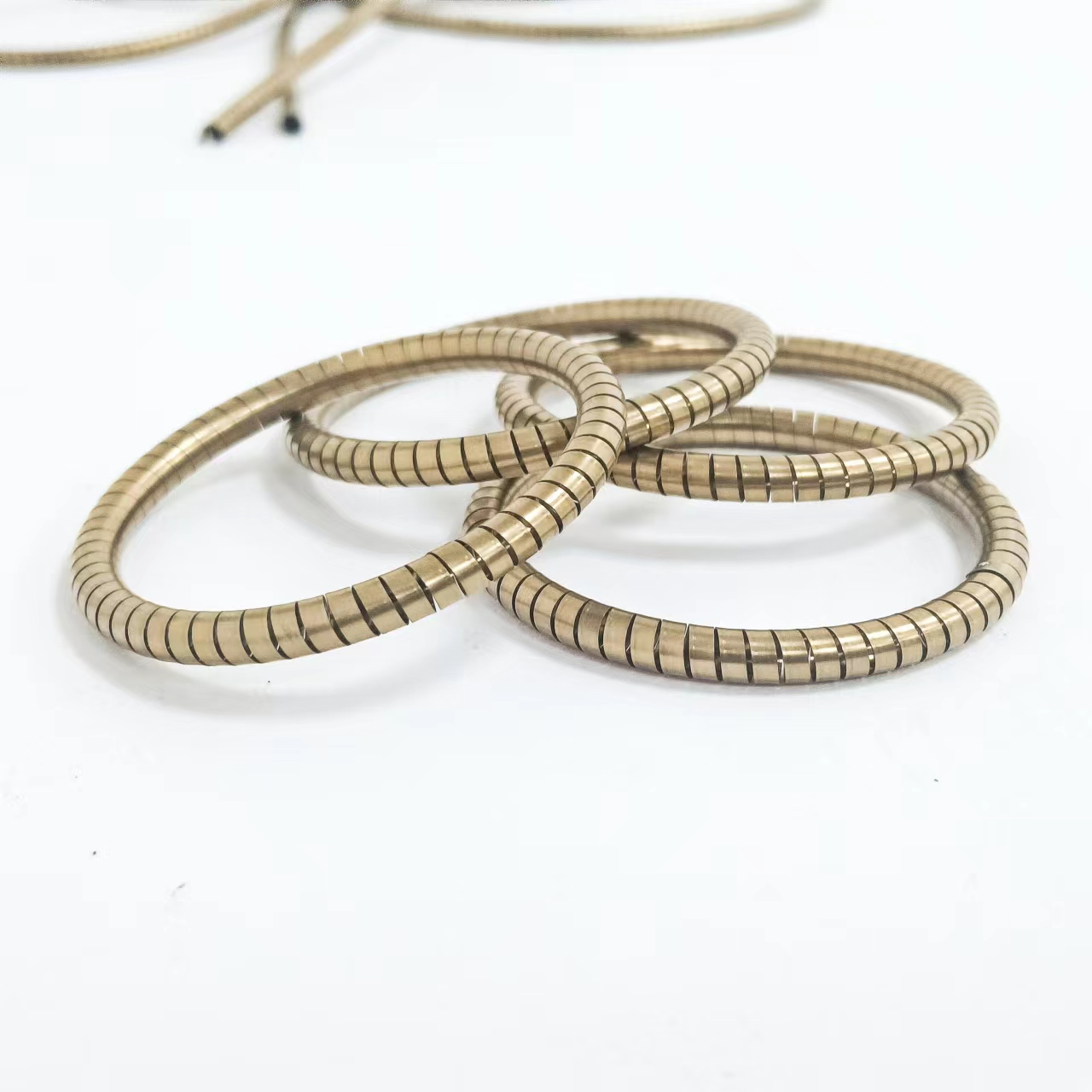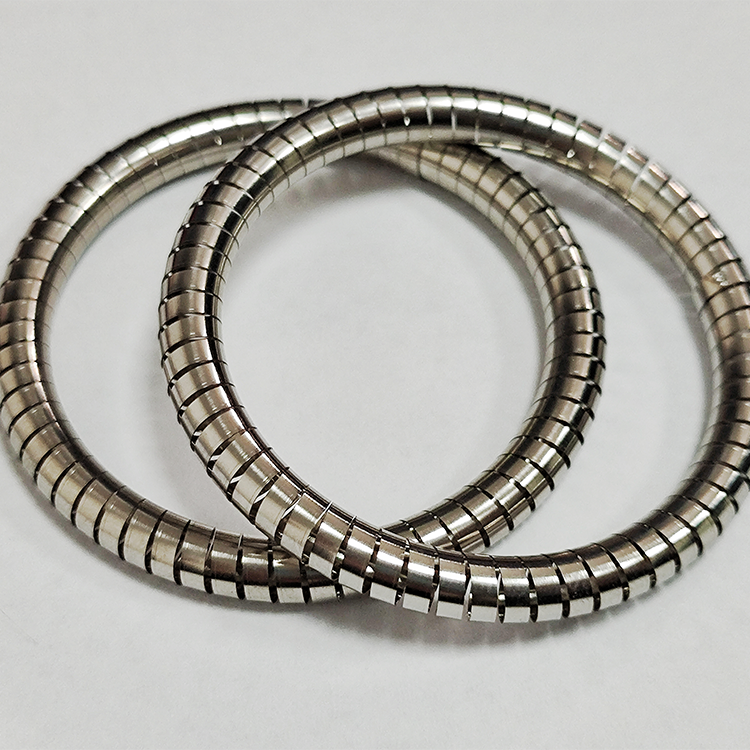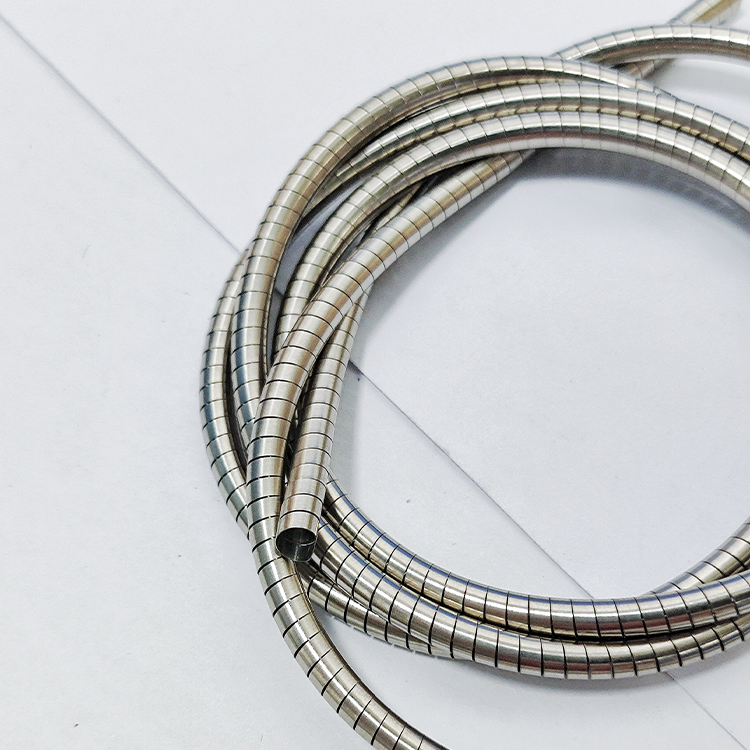With the development of spring industry application technology, mainly in improving the fatigue life and anti fatigue performance under high stress; Secondly, according to the different uses, it is required to have corrosion resistance, wear resistance, non-magnetic, conductivity, heat resistance, etc. Moreover, by strictly controlling the chemical composition, the reduction of non-metallic impurities has also obtained beneficial benefits. The surface quality and dimension precision are improved.

(1)Development of spring steel production technology
In order to improve the quality of spring steel, developed countries have generally adopted the technology of refining outside furnace, continuous casting process, new rolling and on-line automatic detection and control equipment.
In order to ensure the chemical composition of the steel and reduce the content of gas and various non-metallic inclusions, large capacity electric furnace or converter is used for smelting, and the oxygen content (mass fraction) is reduced to (0.0021 ~ 0.0010)%. The ultra-pure steel is produced, which greatly improves the design and working stress of the spring.
Continuous casting process has been widely used in spring steel production. Continuous casting can reduce the segregation of steel, reduce the secondary oxidation, improve the surface decarburization, and make the structure and properties stable and uniform.
The use of the split continuous rolling mill can improve the dimension accuracy, surface quality, and also make the microstructure of the steel uniform along the length. In order to ensure the surface quality of the product, the on-line automatic detection and control is adopted. In order to adapt to the production of variable section spring flat steel, a new rolling forming process of austenite was developed, namely, the steel was heated to the austenite area and then quenched to metastable austenite area. This technology can make steel not reduce plasticity but also improve strength. In addition, the performance of spring steel can be improved by on-line heat treatment and surface hardening treatment after rolling.

(2)Development of alloy steel
The main function of alloy elements is to improve mechanical properties, technological properties and give some special properties. SiCr steel has been widely used in valve spring and suspension spring. Si is the best alloy element to resist stress relaxation. Adding V and Mo to SiCr steel to form sicrv and sicrmo steel can improve fatigue life and anti relaxation performance. At the same time, the relaxation resistance of SiCr drawing steel wire at high temperature is better than piano steel wire and carbon spring steel wire. With the high-speed miniaturization of engine, Ti alloy with good anti flutter performance, light weight and small elastic modulus has been widely used, and its strength can reach 2000 MPa.
(3)Development of low carbon austenitic steel
Low carbon austenitic steel 38simnb is a new type of high performance spring steel independently developed in China. The 38SiMnVBE developed on this basis has more advantages, such as high strength and toughness, high hardenability, high applicability and high performance ratio. After controlled rolling, the tensile strength = (2030-2140) MPa, yield strength = (900-2010) MPa, elongation = (12-15)%, surface shrinkage = (48-55)%. It provides high performance material for the few variable section panel spring.
(4)Development of stainless steel
China is a big country in stainless steel production. With the development of stainless steel production, many varieties have been developed. At present, there are more than 50 varieties, which basically meet the needs of domestic production development. This paper briefly describes some new varieties currently developed.
1)The initial formation of austenitic stainless steel system. Low carbon austenitic stainless steels 0Cr18Ni9 and 00cr17ni2mo2 were developed to eliminate the grain boundary corrosion fatigue caused by carbon. In order to improve its special properties, Cu, Ti, Nb, Mn, Cr, Si and N can be added.
2)Development of nitrogen containing stainless steel. Nitrogen instead of carbon has been used in stainless steel. In austenitic stainless steel, N and C have many common characteristics. The effect of N on stabilizing austenite is greater than that of Ni, which is equivalent to that of C. The binding energy of N and Mn can replace the expensive Ni. N is also one of the most effective solid solution strengthening elements in austenite. The affinity between N and Cr is smaller than that between C and Cr. the precipitation of Cr2N is rarely seen in austenitic steel. Therefore, n can improve the strength of stainless steel without reducing the corrosion resistance.

3)Development of super ferrite stainless steel. Ferritic stainless steel has good corrosion resistance and oxidation resistance, and its stress corrosion resistance is better than that of austenitic stainless steel. It’s cheaper than austenitic stainless steel. However, it has the disadvantages of poor weldability and brittleness, which limits the production and use. The weldability and brittleness of ferritic steel can be improved by reducing the content of carbon and nitrogen, adding stabilizing elements such as Ti, Nb, Zr and Ta, and adding toughening elements such as Cu, AI and V.
4)Development of super austenitic steel. Super austenitic steel refers to austenitic steel whose Cr, Mo and N contents are significantly higher than those of conventional stainless steel. One of the most famous is the steel containing 6% Mo (245smo). This kind of steel has very good local corrosion resistance, good pitting corrosion resistance (PI 40) and good stress corrosion resistance under the conditions of seawater, aeration, crevice and low-speed scouring. It is an alternative material for Ni based alloy and titanium alloy.
5)Development of super martensitic stainless steel. Traditional martensitic stainless steels 2Cr13, 3Cr13, 4Cr13 and 1Cr17Ni2 lack sufficient ductility and are very sensitive to stress during cold upsetting, which makes cold forming difficult. In addition, the weldability of steel is relatively poor, and the scope of use is limited. In order to overcome the above shortcomings of martensitic steel, an effective way has been found recently, which is to develop a new series of alloy steel super martensitic steel by reducing the content of C and Ti and increasing the content of Ni. This kind of steel has high tensile strength, good ductility and improved weldability, so super martensitic steel is also called soft martensitic steel or weldable martensitic steel.
(5)Development of spring steel wire
After more than 100 years of development, the technology of spring steel wire has experienced from lead quenching to oil quenching, and now to induction heating quenching. In addition, the technology and equipment are constantly innovated and improved, and the variety and quality are constantly updated. Recently developed induction heating quenching and tempering process for valve spring steel wire. The test shows that the plasticity, toughness, anti relaxation, fracture toughness, delayed fracture resistance and fatigue life of the steel wire are greatly improved than those of oil quenching and tempering steel wire due to short induction heating time, fine quenching structure and almost no decarburization layer on the surface of the steel wire.
Another kind of ultra-fine grain thermomechanical treatment steel wire has been applied in the field. Ultra fine grain thermomechanical treatment is a composite strengthening and toughening process combining ultra-fine microstructure with thermomechanical treatment. It can not only improve the mechanical properties of steel wire, but also improve the surface quality of steel wire. The surface quality of materials has a great influence on fatigue properties. In order to ensure the surface quality, the peeling process is adopted for the materials with special requirements, and the surface layer is removed by 0.1 mm. Eddy current testing is used for 0.5mm depth defects. The surface roughness can be reduced to = (6.5 ~ 3.4) m by electrolytic grinding.
(6)Development of stainless steel wire
In recent years, the production of stainless steel wire in foreign countries has developed rapidly. The main varieties of domestic demand increase are 1Cr18Ni9 and 0cr17ni7ai.
The characteristics of advanced steel wire production process are that the wire rod is peeled first to remove the surface defects caused by hot working. Except for pickling after the first solid solution treatment, the whole cold working process maintains a bright surface.
With the development of technology, the production process of stainless steel wire is further simplified, and the quality control of some metal products industry is simplified to meet the requirements of wire rod quality. After the wire drawing machine, the surface coating and residual lubricating film should be removed by wiping with cleaning ball and cleaning in water. Before bright heat treatment, electrolytic pickling, alkali neutralization, water washing and drying devices are equipped to thoroughly remove oil stains on steel wire surface and improve surface quality.
(7)Development of shape memory alloy
At present, 50Ti and 50ni are the best unidirectional shape memory alloys for spring applications. The spring made of shape memory alloy is retractable under the action of temperature. It is mainly used in the control system of constant temperature, constant load and constant deformation. Because the actuator is driven by the spring, the working stress of the spring changes greatly.
(8)Application of ceramics
The ceramic has high elastic modulus and low fracture strength, which is suitable for the place with little deformation. At present, there are heat resistant, wear-resistant and insulation ceramics, and superplastic zinc alloy (SPZ) is used, which has high strength at room temperature. In addition, there are high-strength silicon nitride, which can withstand high temperature, up to 1000 ℃. But ceramic spring is not suitable for working under impact load.
(9)Application of fiber reinforced plastics in spring
Glass fiber reinforced plastic (GFRP) leaf springs have been widely used in Britain, the United States, Japan and other countries. In addition to transverse suspension, they can also be used in special light vehicles, such as racing car longitudinal suspension. At present, the suspension spring of carbon fiber reinforced plastic (GFRP) has been successfully developed, which is 20% lighter than that of metal leaf spring